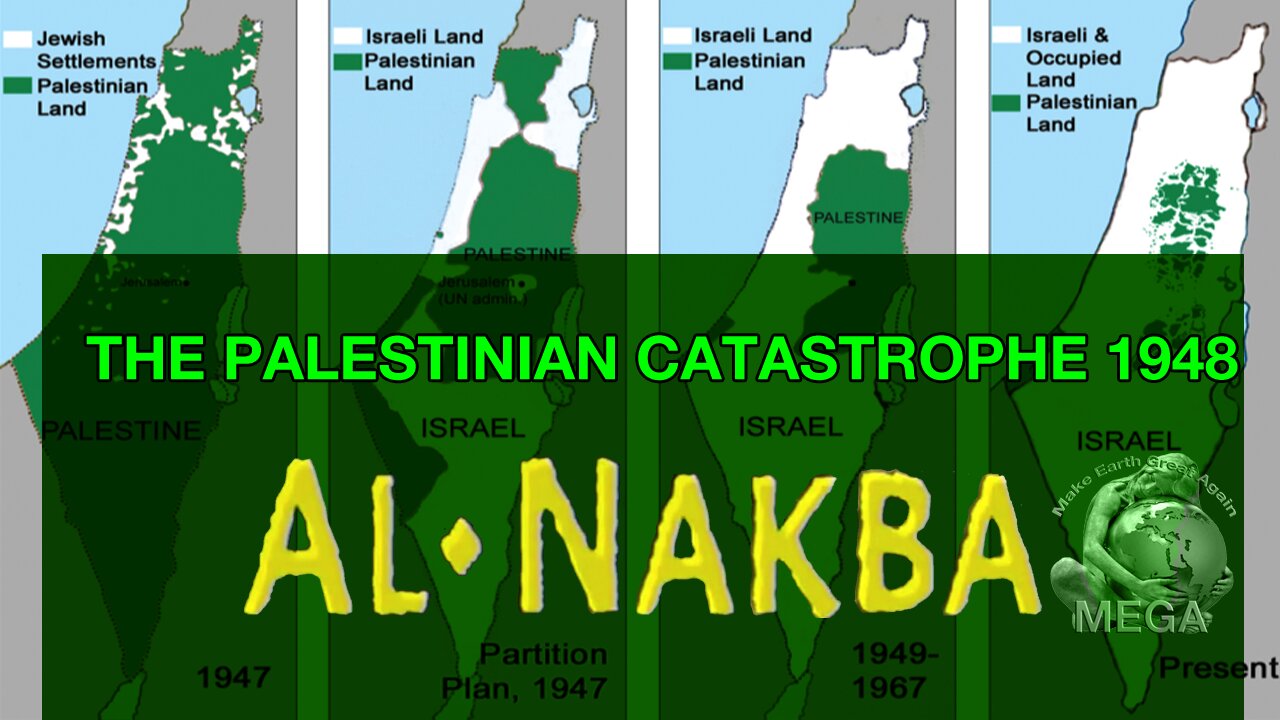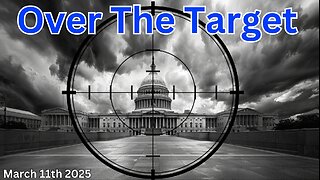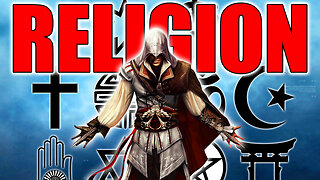Premium Only Content

Al Nakba -- The Palestinian Catastrophe 1948 (1997)
On May 15, 2023 Palestinians around the world commemorate 75 years of having lost their homeland. What is the Nakba, how does it tie into the Israeli-Palestinian conflict and why is it still relevant today?
The Arabic word Nakba means catastrophe or disaster. In reference to the Israeli-Palestinian conflict , the term Nakba or al-Nakba refers to the Palestinians having lost their homeland during and after the 1948 Arab-Israeli war.
It's thought that around 700,000 people in what is now Israel either fled or were forced from their homes. Many Palestinian refugees abroad remain stateless to this day.
What is Nakba Day?
May 15, 1948 was the beginning of the Arab-Israeli war and has long been a day that Palestinians take to the streets to protest against their displacement. Many carry Palestinian flags, bring the keys of their former homes or carry banners with the symbols of keys, illustrating the hope of returning home and what the community sees as their right to return.
In the past, some protests have turned into violent clashes. Israel has accused Hamas and other organizations that are listed by the EU and other countries as terror organizations of using the day to further their causes.
The term Nakba Day was coined in 1998 by then-Palestinian leader Yasser Arafat. He set the date as the official day for the commemoration of the loss of the Palestinian homeland.
Why did Palestinians have to leave?
Until the end of World War I, Palestine was under Turkish rule as part of the Ottoman Empire. It then fell under British control, the so-called Mandate for Palestine. During that period — which was marked by growing antisemitism in Europe — an increasing number of Jews from around the world moved there, to what they see as their ancestral homeland: Eretz Israel, the Promised Land where Jews had always been living, albeit in much smaller numbers.
After the experience of the Holocaust in Nazi Germany, a United Nations Partition Plan for Palestine was adopted by the UN General Assembly. The Arab League rejected the plan, but the Jewish Agency for Palestine accepted. On May 14, 1948, the State of Israel was proclaimed.
As a reaction, a coalition of five Arab states declared war but was eventually defeated by Israel in 1949. Before the war, between 200,000 and 300,000 Palestinians had already left or been forced out and during the fighting, a further 300,000 to 400,000 Palestinians were displaced. The overall figure is estimated to be around 700,000 people.
During the war, more than 400 Arab villages were destroyed. While human rights violations were committed on both sides, the massacre of Deir Yassin — a village on the road between Tel Aviv and Jerusalem — is particularly engraved in Palestinian memory to this day. At least 100 people were killed, including women and children. The event triggered widespread fear among Palestinians and prompted many to flee their homes.
By the end of the war, Israel held around 40% of the area initially earmarked for the Palestinians by the UN partition plan of 1947.
READ MORE HERE:
https://www.dw.com/en/what-is-the-palestinian-nakba-and-why-does-it-matter/a-65539735
OR HERE:
https://www.middleeasteye.net/news/what-is-nakba-palestine-israel-conflict-explained-1948
-
 34:08
34:08
BonginoReport
3 hours agoVictory Over Marxism: BLM Plaza Falls (Ep.157) - 03/11/2025
65.6K67 -
 LIVE
LIVE
Right Side Broadcasting Network
18 hours agoLIVE: House Judiciary Hearing on Antitrust Law and the NCAA - 3/11/25
2,003 watching -
 LIVE
LIVE
The Tom Renz Show
31 minutes agoThe Globalist Engineered Economic Collapse Beginning With Attacks on Elon Musk, X & Tesla
135 watching -
 LIVE
LIVE
The Big Mig™
12 hours ago“DEI with a Side of Debt: Biden’s Trillion-Dollar Giveaway”
2,571 watching -
 1:17:34
1:17:34
Dear America
12 hours agoMassive Cyberattack Against Elon's X Sparks Widespread CONCERN! + More Attacks On Tesla Vehicles?!
43.1K11 -
 LIVE
LIVE
Wendy Bell Radio
6 hours agoOver The Target
11,957 watching -
 LIVE
LIVE
Bitcoin Policy Institute
2 hours agoBitcoin for America
366 watching -
 1:05:29
1:05:29
2 MIKES LIVE
2 hours agoTHE MIKE SCHWARTZ SHOW with DR. MICHAEL J SCHWARTZ 03-11-2025
11.8K1 -
 34:43
34:43
Degenerate Jay
1 day ago $2.60 earnedAssassin's Creed Was Always Anti-Religion?
37.1K6 -
 6:41
6:41
Silver Dragons
20 hours agoCanadian Silver Maple Leaf Coins - Dealer Reveals Everything You NEED to Know
29.5K3